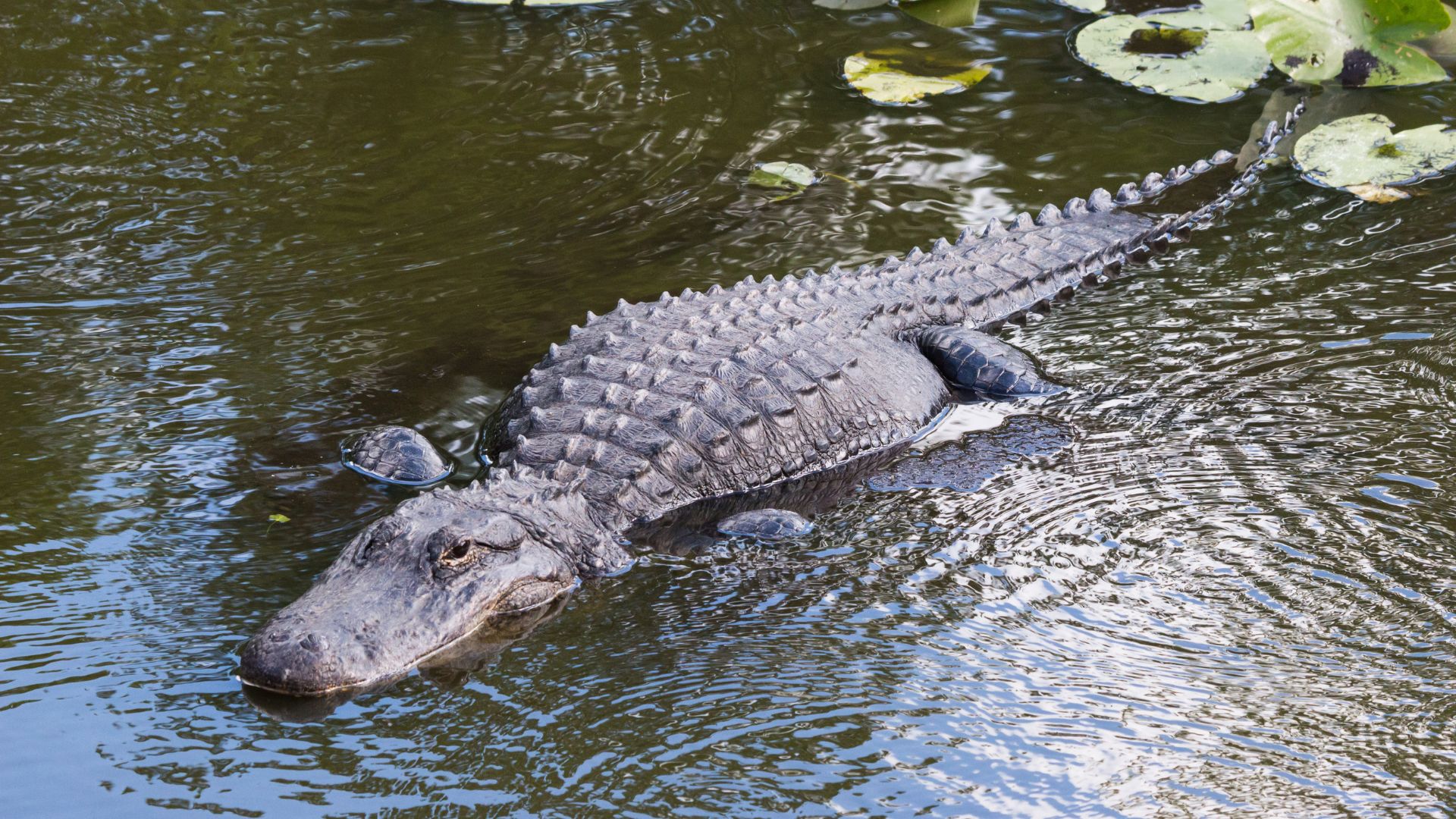The United States is home to an incredible variety of wildlife, including the mighty alligator – one of the country’s most fascinating reptiles. Primarily found in the southeastern states, alligators thrive in warm climates and water-rich habitats where they can hunt, nest, and bask in the sun.
Let’s take a closer look at the ten U.S. states with the largest alligator populations, exploring what makes these regions ideal for these ancient reptiles and uncovering interesting facts about their natural habitats.
1. Louisiana
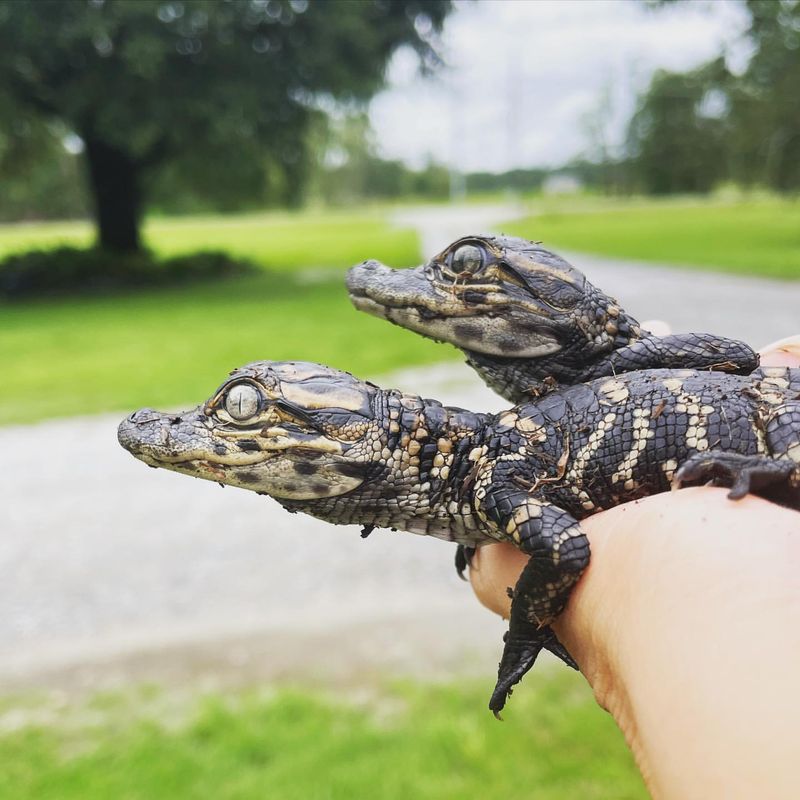
Louisiana: Approximately 2 million alligators.
Louisiana is often considered the alligator capital of the United States. Its vast network of swamps, bayous, and wetlands provides an ideal habitat for millions of these reptiles.
Alligators can be seen warming themselves on the banks or gliding through the murky waters, a common sight that adds to the state’s unique charm. The state’s wildlife management programs have been successful in sustaining a thriving alligator population.
With over two million alligators, Louisiana takes pride in its conservation efforts, balancing human activities with wildlife preservation. Visitors to Louisiana can embark on exhilarating swamp tours, offering a chance to see alligators in their natural environment.
The experience is not only thrilling but also educational, shedding light on the importance of wetlands in maintaining ecological balance.
2. Florida
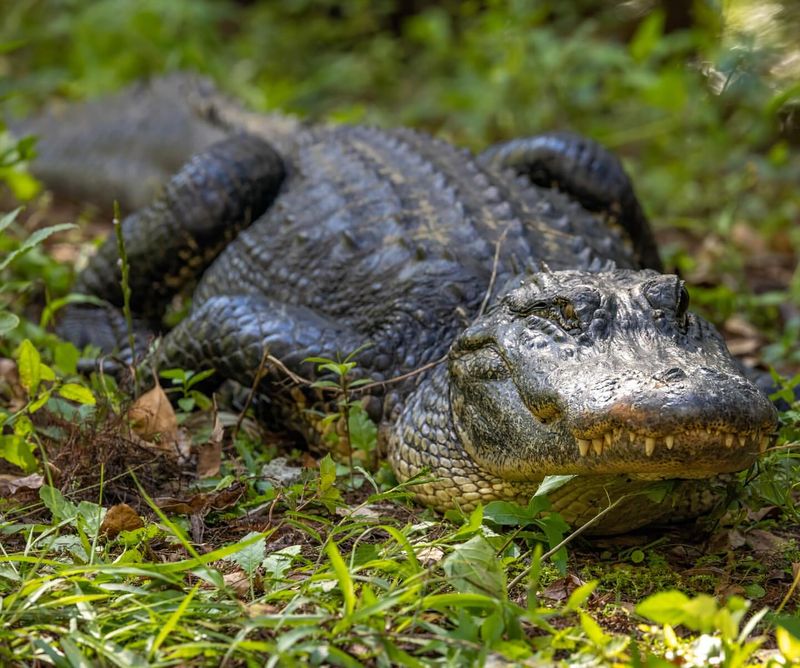
Florida: Around 1.3 million alligators.
Florida is synonymous with alligators, boasting a robust population spread across its numerous lakes, rivers, and swamps. These animals are an iconic symbol of the state, and encounters with them are a fascinating aspect of Florida’s outdoor adventures.
The Florida Everglades, a unique ecosystem, is home to a significant number of alligators. This habitat is crucial for the survival of many species and plays a vital role in Florida’s biodiversity. Safety is paramount when dealing with alligators in Florida.
Residents and visitors are encouraged to maintain a safe distance and respect these creatures’ natural environment, ensuring coexistence and safety for all.
3. Texas
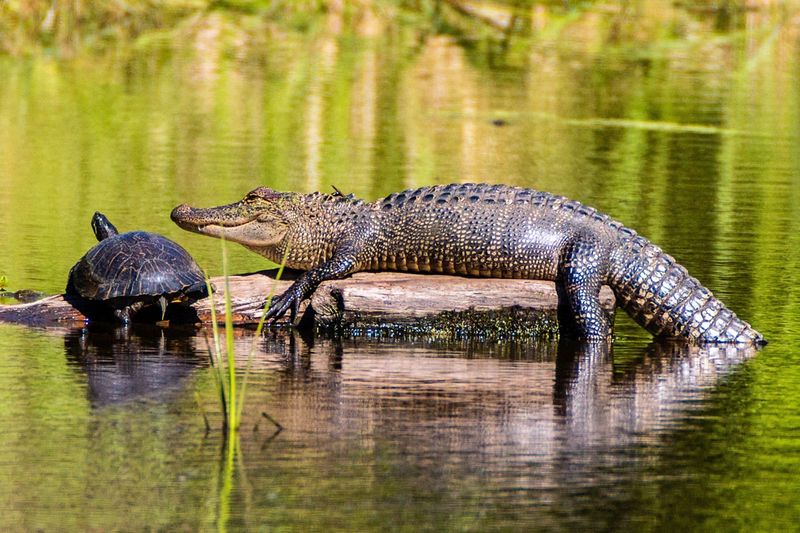
Texas: Estimated between 400,000 to 500,000 alligators.
Texas offers a diverse landscape that supports a healthy alligator population. From freshwater lakes to bayous, the state provides various habitats where alligators thrive.
Eastern Texas, in particular, is a hotspot for alligator sightings. This region’s natural beauty and biodiversity attract enthusiasts eager to glimpse these majestic creatures in the wild.
Conservation efforts in Texas focus on protecting natural habitats and educating the public about alligator safety. Encouraging awareness helps ensure these reptiles remain a vital part of Texas’ ecological tapestry.
4. Georgia
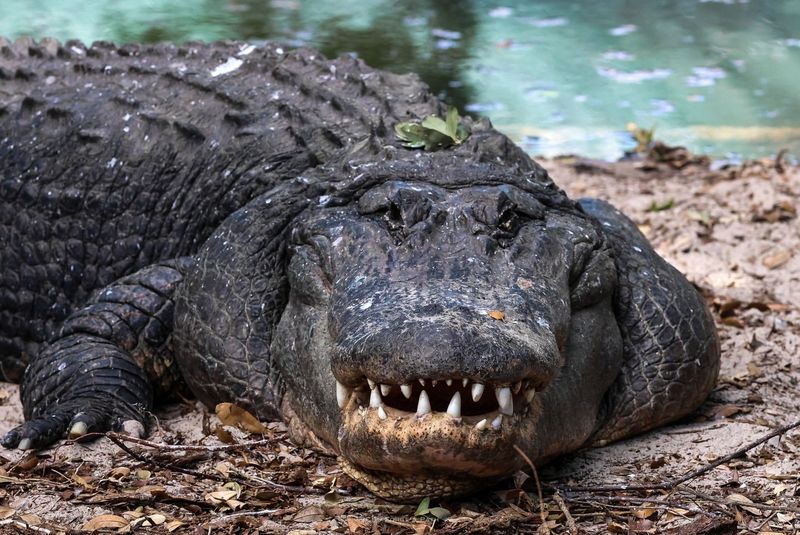
Georgia: Approximately 200,000 to 250,000 alligators.
Georgia’s warm climate and abundance of wetlands make it a favored home for alligators. These reptiles play an essential role in the ecosystem, helping to maintain balance among various species. The Okefenokee Swamp in Georgia is a renowned area for alligator spotting.
This pristine environment attracts tourists seeking a closer look at native wildlife. Georgia’s wildlife agencies work tirelessly to monitor alligator populations, ensuring their continued presence in the state’s waterways.
Public education campaigns focus on peaceful coexistence and preserving Georgia’s natural heritage.
5. South Carolina
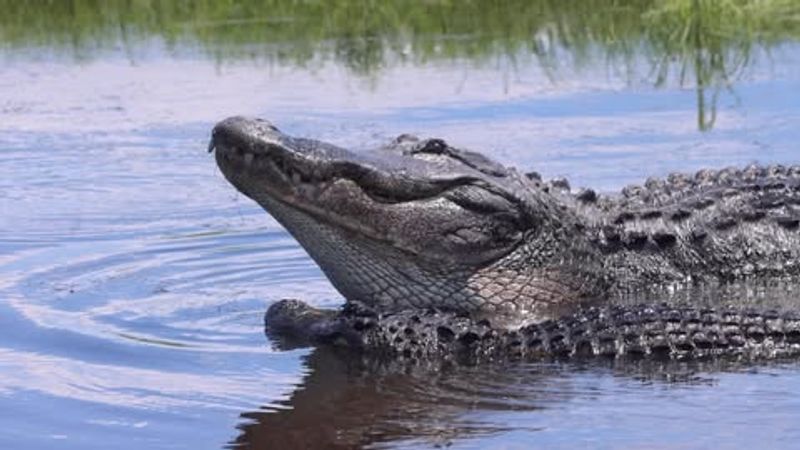
South Carolina: About 100,000 alligators.
South Carolina is home to a significant alligator population, largely due to its extensive coastal ecosystems. These areas provide the perfect conditions for alligators to thrive.
The state’s marshlands and river systems are teeming with life, offering a glimpse into the vibrant biodiversity that characterizes South Carolina. Visitors often engage in wildlife tours to observe these magnificent animals.
Efforts to protect alligator habitats in South Carolina are ongoing, with initiatives designed to balance ecological health and human activity. Education and awareness are key components in these conservation endeavors.
6. Alabama
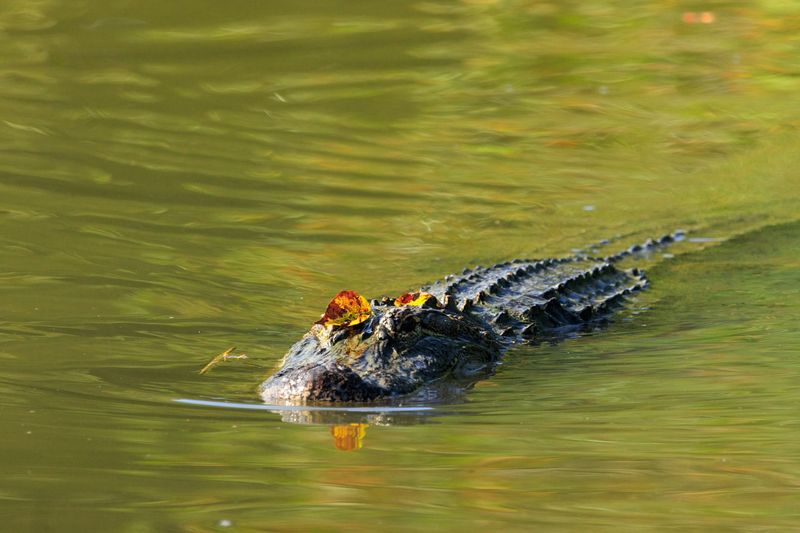
Alabama: Roughly 70,000 alligators.
Alabama’s rich tapestry of rivers, lakes, and swamps provides a perfect environment for alligators to flourish. The state’s commitment to preserving natural habitats is evident in its thriving alligator population.
The Mobile-Tensaw River Delta is a notable location for alligator enthusiasts. Its extensive wetland areas are a sanctuary for various species, including alligators. Alabama emphasizes the importance of coexistence with wildlife.
By promoting responsible outdoor activities, the state ensures that both residents and visitors can enjoy Alabama’s natural wonders safely and sustainably.
7. Mississippi
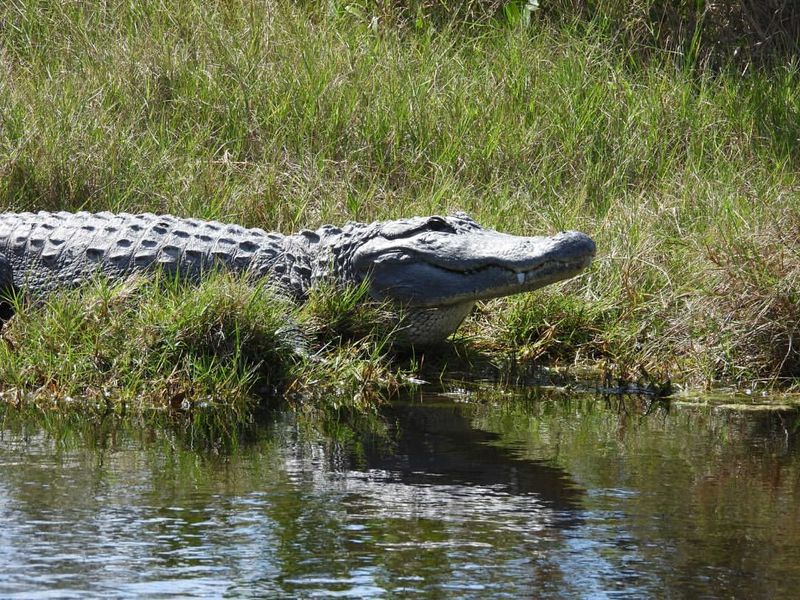
Mississippi: Estimated between 32,000 to 38,000 alligators.
Mississippi’s lush landscapes and extensive water systems create a welcoming habitat for alligators. These reptiles are a common sight in the state’s swamps and bayous, often drawing the interest of wildlife enthusiasts.
Conservation efforts in Mississippi focus on maintaining healthy alligator populations while balancing the needs of human development. These efforts are crucial in preserving the state’s rich biodiversity.
Visitors to Mississippi can explore various natural parks and reserves to experience the state’s wildlife up close. Educational programs help foster an understanding of the role alligators play in maintaining ecological balance.
8. Arkansas
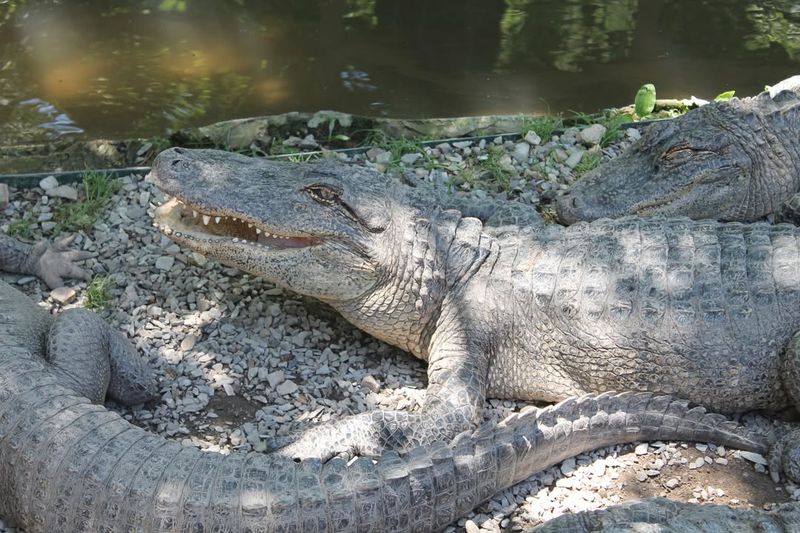
Arkansas: Approximately 2,000 to 3,000 alligators.
Arkansas, though not as famous for alligators as some other states, supports a healthy population in its southern regions. The state’s diverse ecosystems provide suitable habitats for these fascinating reptiles.
The wetlands in Arkansas offer a peaceful retreat for alligators, away from the hustle and bustle of human activity. These areas are crucial for breeding and sustaining the population. State agencies work diligently to monitor and protect alligator habitats, ensuring these creatures continue to thrive in Arkansas.
Public engagement and education are vital in promoting coexistence and appreciation for the state’s natural environment.
9. North Carolina
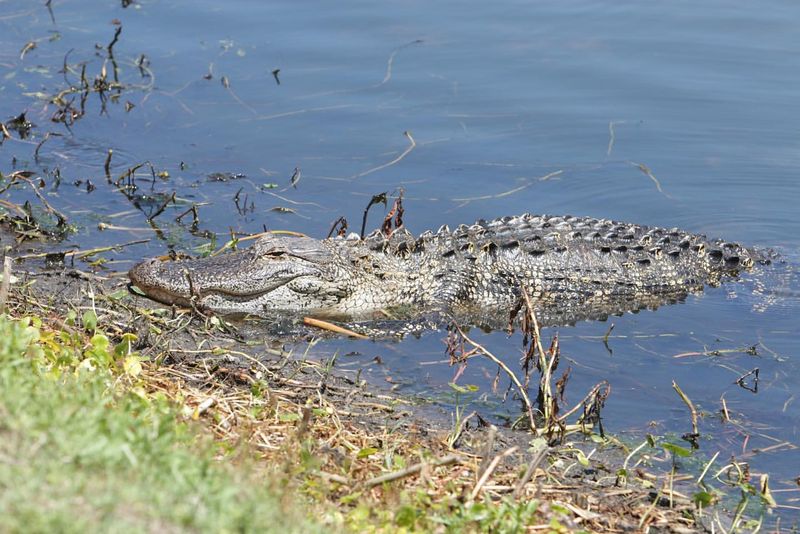
North Carolina: Around 1,000 alligators.
North Carolina’s varied landscapes, from coastal areas to inland rivers, provide habitats for a modest alligator population. These reptiles are primarily found in the warmer southeastern regions of the state.
The Alligator River National Wildlife Refuge is a key location for observing alligators in North Carolina. This protected area offers a haven for numerous species and is a focal point for conservation efforts.
Efforts in North Carolina focus on habitat preservation and public education, ensuring that alligators continue to be a part of the state’s rich biodiversity. Visitors are encouraged to explore these natural areas responsibly.
10. Oklahoma
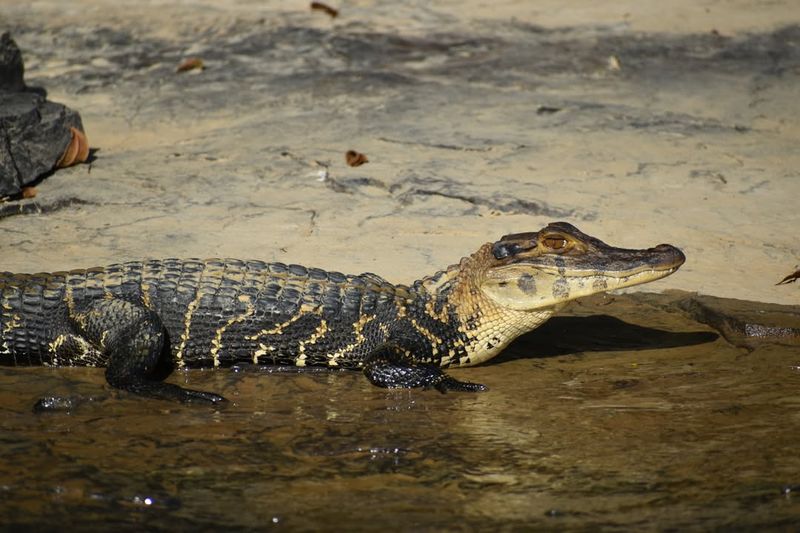
Oklahoma: Estimated between 100 to 200 alligators.
Oklahoma may not be the first state that comes to mind when thinking of alligators, but it supports a small, stable population. Most alligators in Oklahoma are found in the southeastern parts, where the climate is warmer.
The Red Slough Wildlife Management Area is a notable site for alligator spotting. This area is managed to support a variety of wildlife species, including alligators, offering a glimpse into the state’s natural diversity.
Oklahoma’s wildlife departments are dedicated to monitoring alligator populations and promoting awareness about these reptiles. By fostering a deeper understanding, they aim to protect alligator habitats while also educating the public on safe practices.

